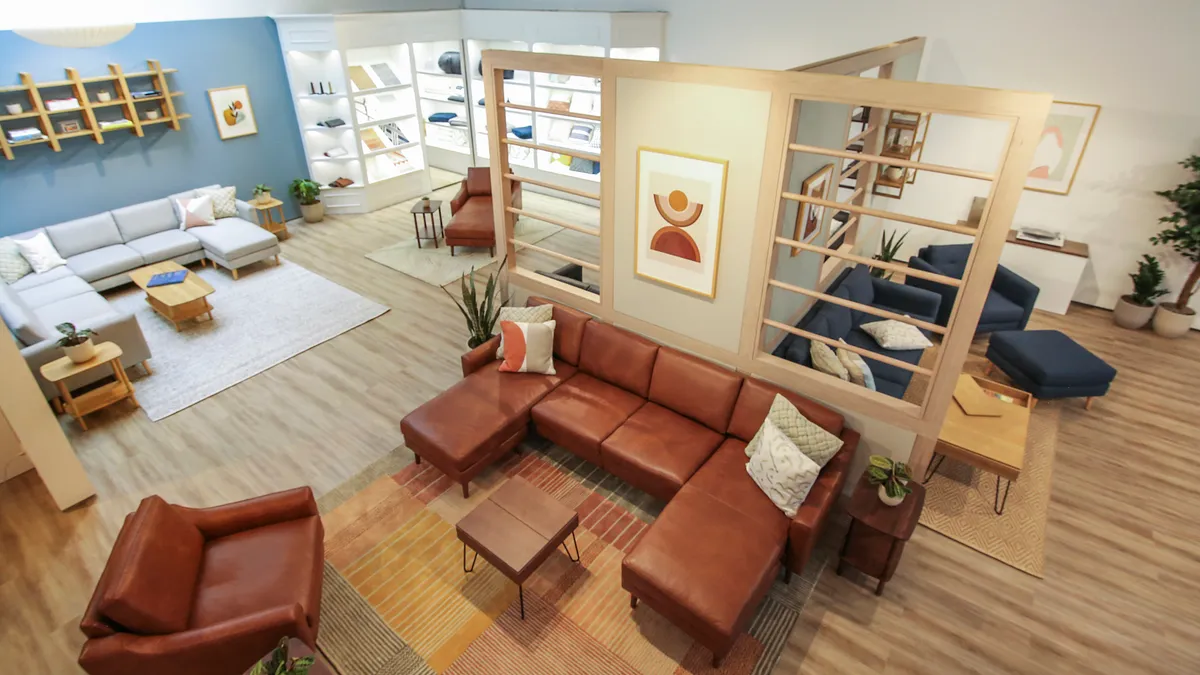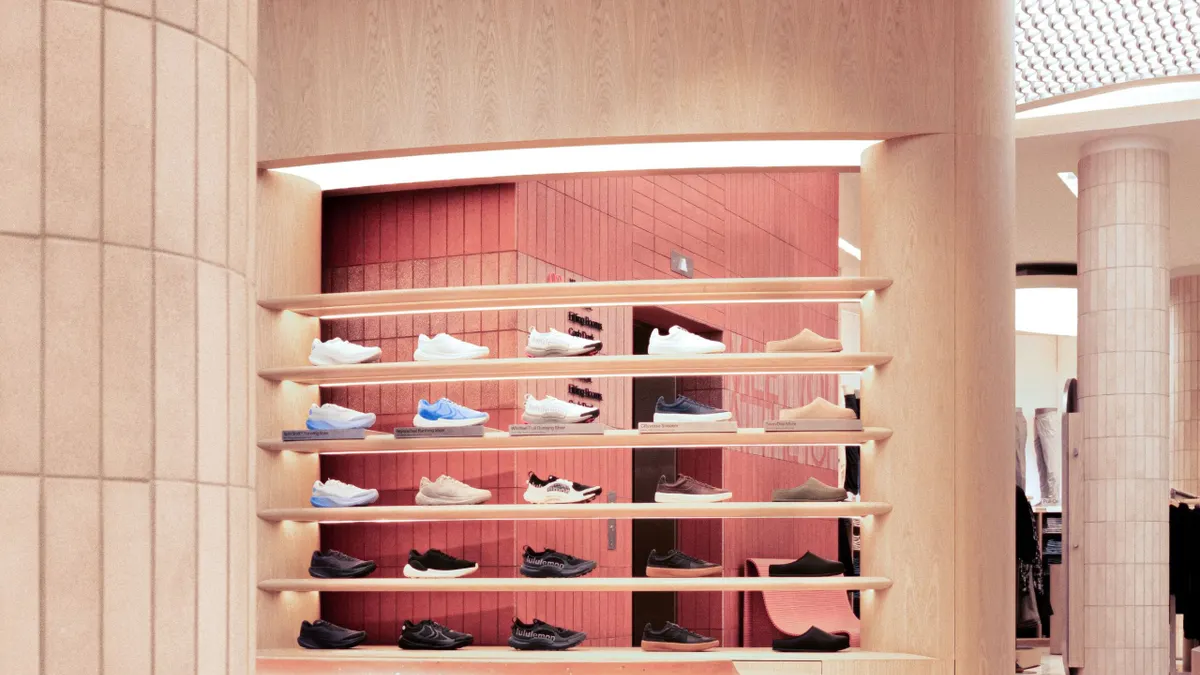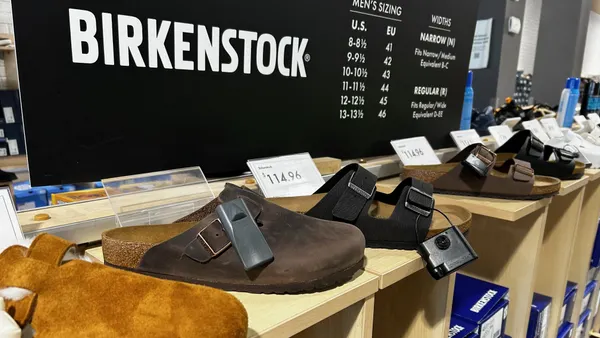Traditionally, before a consumer made a big investment purchase for their home, like a sofa or a mattress, they wanted to go into a store and "test" it out. However, in the face of COVID-19, home retailers will need to rethink how to showcase their pieces in a way that's safe for both customers and employees.
"You have to think about the entire ecosystem … because any weak link will completely destroy any objective and intent that you have," Bhrugu Pange, managing director in AArete's Technology Solutions practice, told Retail Dive in an interview. "We have to design experiences that are safe, yet delightful for our customers and prospects. We have to create experiences that are safe and healthy for our employees, and we have to be collaborative in our approach to this."
Retailers will have to adhere to a new set of safety precautions, like requiring workers to wear gloves and masks, and encouraging customers to do the same, practicing social distancing and limiting the number of customers allowed in stores at any given time.
There are ways store can continue to offer a high-touch shopping experience for products like furniture, sources said. Individual stores "can get a disposable cover and for each customer, they could put that cover on the bed and it can be rolled up and could be thrown away," Michael Brown, a partner in the consumer practice at Kearney, told Retail Dive in an interview. "There'll be a little bit of cost to that, but I do think that they are going to have to react to this changing dynamic and as most retailers will have to do, go to a contactless selling experience."
Leaning on digital
Several retailers in the sector have started to reopen stores in phases. Bed Bath and Beyond in May said it had plans to reopen some 600 stores, but still expects half of the stores across its banners to remain closed through June 13. Crate and Barrel last month resumed some operations on a smaller scale and expanded its contactless and curbside pickup options. The retailer has also pushed its selling appointments, either virtual or in-person, where customers can connect with designers, CEO Neela Montgomery said in a webinar in late May.
"I never thought we would move to shopping by appointment, but that, I think, increasingly will give customers a lot of confidence around coming in and spending longer, having more of an in-depth conversation and being able to see things," Montgomery said. "I think we're lucky that … the size of our stores tends to allow for it."
Unlike many other traditional retailers with a large brick-and-mortar presence, 50% of Crate and Barrel's sales prior to the pandemic already came through its digital channels. As stores shuttered, consumers shifted their spending even further online, Montgomery said, but it's still unclear how much of that spending will shift back to stores when they reopen. "Is it now, we're going to be 60% online, 40% in the stores? Or is it 70/30? I think that's something we don't know. I think what we for sure know is it's not 50/50 anymore."
"If you think about the trend in bricks-and-mortar retail over the last few years, [it] has been the trend of lower traffic, and higher conversion ... and making every visit count," Montgomery said. "I think we're just moving into an era where that's going to be even more exaggerated, and even more important for us to really provide that excellent service and ensure that we are driving back conversion."
Which begs the question: What's the function of a home store now?
Consumers often enter a store not knowing exactly what they want to purchase. They may have an idea, but they may also be looking around to see if anything sparks inspiration. Montgomery, though, said in the time of COVID-19, "any customer that's walking into your store right now is probably on a mission to buy something and have an idea. They're not just browsing." That's been a positive for Crate and Barrel. The retailer's approximate retail value and conversion rate have been "very high" as a result, Montgomery said.
Having a set shopping list in mind prior to entering the store comes at a price, however. What is lost is the opportunity to sell a customer other related "impulse" purchases, Pange said.
"If I go into a store and I buy a grill, I'd probably buy a great grill kit," he added. "Some selling is going to take a big hit. What companies need to do is to figure out how we can make it more e-commerce savvy, in a way that, without experiencing the product, I should be able to get a pretty good sense of what it is, how it could fit in my home, what it would look like, what it feels like."
What that means for retailers is investing in technology like augmented reality and virtual showrooms to make up for the experiences normally had in stores, Brown said, "so consumers can really look at products and understand that as opposed to the little two inch by two inch pictures we all get online and that we have to scroll through to find a look or a feel that we like."
But many traditional retailers in the sector haven't made substantial strides in the digital space, and some of them have blamed more established e-commerce players for their demise. Pier 1 — which filed for bankruptcy in February and last month moved to wind down its retail operations — ceded market share to more established online retailers like Wayfair and Amazon. Art Van, which also filed for Chapter 11 this year, cited similar reasons for falling out of favor with consumers.
"My great hope is that this spurs real change in the mainstream furniture retailing business, because I think there are tremendous opportunities to shake up the structure of that industry in the way they do business," Hart Posen, professor of management at the University of Wisconsin, told Retail Dive in an interview.
A lot of the regional players, he said, have "been doing business the same way for decades," pointing to the fact that some of the more traditional retailers in the space have one goal in mind when a customer walks into their stores: make a sale. "It's a little bit of the old style, used car salesman thing. You know, all the sales which are fake sales, Presidents' Day, lowest prices ever guarantee," he added. However, some of the newer retailers, particularly the digitally native brands, view their physical locations as just a different channel to connect with their customer base.
"We will definitely not be one of the first stores to open. We can afford not to."

Stephen Kuhl
CEO of Burrow
But stores shouldn't be ruled out entirely, even for those that predominantly operate online. Because several of these retailers have relatively few physical stores, they have the ability and flexibility to be a bit more cautious with their reopening plans.
"We will definitely not be one of the first stores to open," Burrow CEO Stephen Kuhl said of reopening its only physical store, Burrow House, located in New York City. "We can afford not to." Its one store accounted for a little less than 10% of its overall revenue, Kuhl told Retail Dive in an interview. And the pandemic has put the company's expansion plans "on hold until this goes away," he added.
To help maintain a connection with its customers, the direct-to-consumer brand launched Burrow House from Home, a virtual design consultation service. "It picked up right away," Kuhl said of the service, which launched on March 20. Burrow has booked more than 1,200 appointments, many of which have lasted over an hour, and it's generated "well north of $5,000 a day on average in revenue," he added. While its launch was accelerated during the pandemic, Kuhl said Burrow plans to continue the service on its site well after COVID-19 subsides because it allows the brand's design consultants to connect with consumers across the country rather than just in New York City.
Virtual services have also been established by other DTC brands. Casper on May 12 began offering virtual design consultations at select stores where localities have reopened. The company — taking a phased approach to reopening stores, which initially closed on March 17 — will then move to one-on-one appointments in stores, followed by curbside pickup.
Casper, like Burrow, has also scaled back on expansion plans. The brand in 2018 announced it intended to open some 200 stores across North America, which it reiterated when it filed to go public earlier this year. However, COVID-19 threw a wrench into those plans and Casper in May said it was "reducing the number of planned new retail store openings in 2020." It's something retailers in other parts of the industry have had to do as well. Ulta recently announced that it cut its retail expansion plans for the year to between 30 and 40 new stores from 75.
For DTC brands, stores serve a different purpose and still hold value, even though expansion plans may be on hold for now. These companies open stores to lower the cost of customer acquisition, provide an experiential point for the customer to see the products and help reach the scale needed to please investors, Brown said.
"But in the last three months, our world has changed dramatically," Brown said. "It's really important for all retailers to suspend investment into physical environments, reduce the cost of that physical infrastructure, and invest in digital to be able to create contactless experiences where the consumer can shop from the safety of their own homes."























